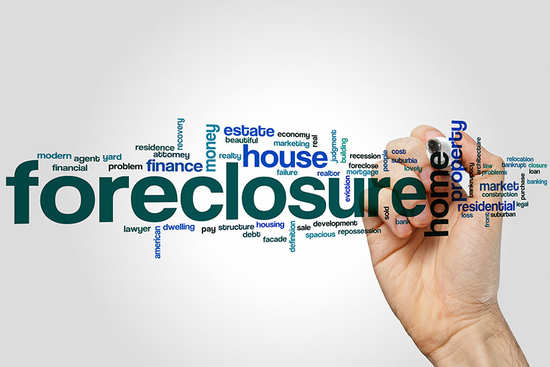
What is a foreclosure?
A foreclosure occurs when a property owner cannot service their mortgage (i.e. make principal and/or interest payments), usually leading to the property (distressed property) being seized and sold (foreclosure sale). Typically, the property in foreclosure is available for investors to purchase.
Buying a foreclosed home is different from buying a typical resale. In many cases the following applies:
- Only one real estate agent is involved.
- The seller wants a pre-approval letter from a lender before accepting an offer.
- There is little, if any, room for negotiation.
- The home comes as-is, and it's up to the buyer to pay for repairs.
The Upside to Foreclosures
As noted here, Purchasing foreclosed (distressed) properties can be a terrific real estate deal. The hope is that both parties to the transaction win by profiting from a timely transfer of title -- which produces a good investment for the investor and divestment for the home owner -- and it might spare the home owner's credit rating before things get any worse.
The Downside to Foreclosures
Unfortunately, as this report notes, profiting from foreclosures isn't the no-brainer many assume it to be -- for each success story there are likely five horror stories. While investors with the very best of intentions can help to reduce their risk, they cannot completely eliminate it.
Distressed properties, as Bigger Pocket observes, are homes that are for sale not because the owner wants to sell, but because of pre-foreclosure, foreclosure, or repossession. These homes are usually offered up through an auction in which the highest bidder gets the property. If the auction is not successful, then the lending party, usually a bank or financial institution, will have to assume ownership of the property.
The Three Types of Foreclosure
There are three ways to acquire distressed property, based on where the property lies in the foreclosure process. The three stages are as follows, as explained by The Balance: pre-foreclosure, foreclosure and post-foreclosure.
1. Pre-Foreclosures
In the pre-foreclosure stage, investors will likely be able to do the most good for the distressed homeowner and for themselves. Pre-foreclosure is where further damage to the home owner’s credit rating can be forestalled and the home may be transferred at a mutually-agreed-upon price before it is necessary to get the lender involved. The best potential leads to locate a property at this stage may come from attorneys, accountants, real estate agents, or through business associates and friends.
2. Foreclosure Stage
In the next phase, when a property is at the foreclosure stage, the best way to identify a potential property is through the County Clerk's office. You may also be able to request that your address or e-mail address be placed on an advance notice list or a list of pending defaults. Title insurance companies may also be of assistance in this area by providing recorded information in exchange for the expectation of future business.
- The foreclosure process itself will vary from one state to the next, depending on whether it is a title or lien state, which determines whether a judicial or non-judicial form of foreclosure is involved. Judicial foreclosures pertain to mortgages, rather than deeds of trusts, and take significantly longer to complete.
- Non-judicial foreclosures pertain to deeds of trust where a third party, called a trustee, handles the entire process in a matter of two to four months after a borrower has defaulted and stopped making payments. Once the property passes through either the judicial or non-judicial phase, it is then ready to be sold at auction to the highest bidder.
3. Post-Foreclosure
And last, at the post-foreclosure stage, the lender has already taken control of the property. The home is then in the possession of the lender's REO (Real Estate Owned) department, or in the hands of a new owner or investor who purchased the property at auction.
Refer to the foreclosure notice to determine the name of the lender as well as the balance owed on the mortgage. Lenders are typically extremely willing sellers, because an REO on the books is an obvious sign of having made a poor lending decision. Both the overhead and losses involved with an REO -- reflected in both the added reserves a lender must maintain as well as any potential property management fees incurred -- means the bank is likely a willing negotiator.
If the property ends up in the hands of a private investor, rather than with the lender, you may still be able to make an offer either on your own or with the help of a real estate agent.
In conclusion, a key investment decision to make is where to enter into the foreclosure process. It is critical that you identify one of the three aforementioned stages and become an expert in that particular process, which will help you to achieve the most success at becoming a long-term investor of distressed properties.
